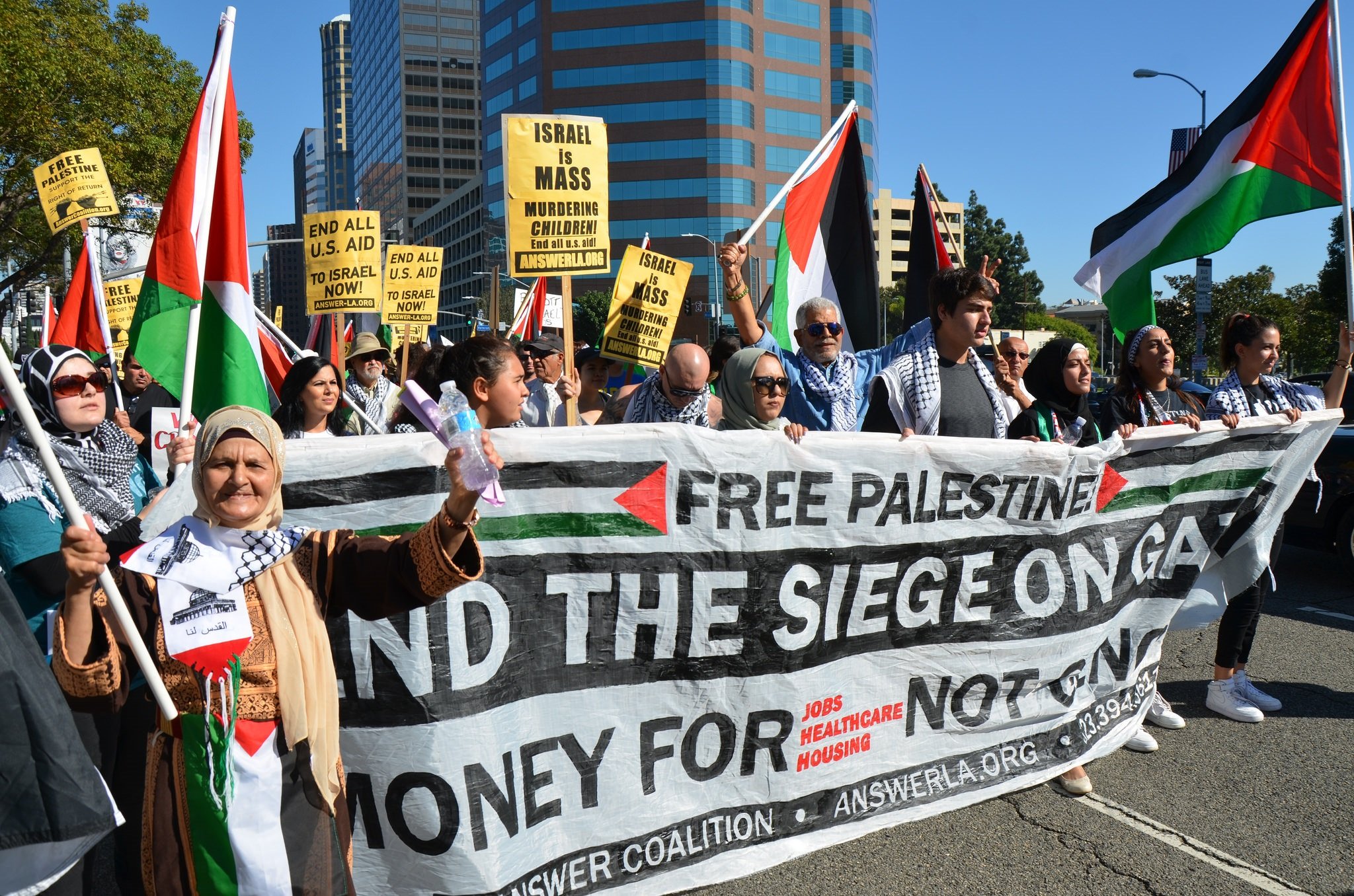 Photo: Bill Hackwell |
The history of the use of the kaffiyeh in the struggle for justice in Palestine demonstrates why it has become a symbol for all people who struggle for unity against colonial occupation and oppression around the world.
In the early 1900s, the British occupied many countries in the Middle East, including Palestine. The Palestinians strongly fought against British occupation by uniting. They used all forms of resistance.
Once the British realized they could not exist as colonizers in Palestine without facing the resistance movement, they tried to deceive the Palestinians. They promised them independence while at the same time protecting Zionist Jewish settlers. The Zionists—mostly immigrants from Europe—were forcibly taking land and resources from the largely unarmed indigenous inhabitants of Palestine.
The kaffiyeh first became a popular symbol of Palestinian resistance in the 1930s, with the emergence of organized armed resistance to the continuing theft of land. Most of the resistance fighters were peasants who traditionally wore kaffiyehs and lived in the mountains or small villages. The fashionable fez was worn by townspeople and city dwellers.
To escape capture, resistance fighters hid in cities and towns. But, wearing kaffiyehs, they were easy to spot. The British arrested any peasant wearing the headdress to crush the resistance.
In response, all Palestinian men, whether from towns or villages, began to wear the Palestinian kaffiyeh. They also stopped carrying identification cards so resistance fighters would not be exposed. These actions by all sectors of Palestinian society signified overwhelming support for those carrying out the resistance.
In the 1960s, the kaffiyeh was renewed as a symbol of resistance as Palestinians escalated armed resistance in response to Israel’s 1967 invasion and occupation of the West Bank and Gaza. The resistance captured the world’s attention when Leila Khaled and other members of the Popular Front for the Liberation of Palestine—a Marxist group —wore kaffiyehs while hijacking five international airliners. These operations drew attention to the Palestinian struggle.
The kaffiyeh was made most popular by the late Yassir Arafat. He wore it draped around his head in the shape of historic Palestine throughout his years of participation in the resistance movement, then as president of the Palestinian National Authority.
The Palestinians have endured decades of brutal colonial occupation and exile. Their heroic struggle for freedom has inspired people around the world. Thousands of women and men, young and old, now wear the kaffiyeh proudly as a symbol of resistance and solidarity with the Palestinian struggle.






